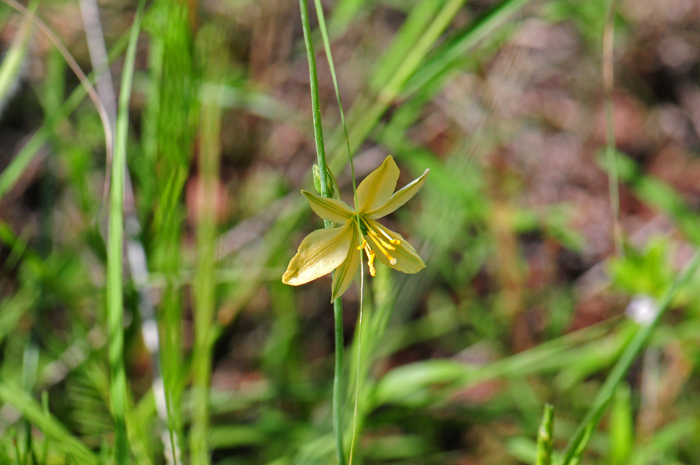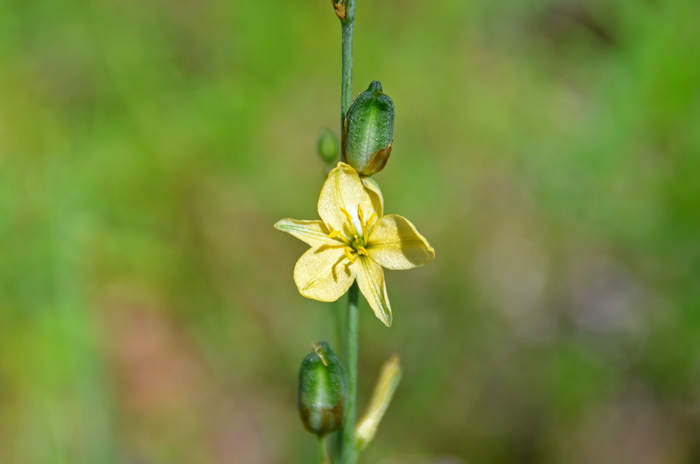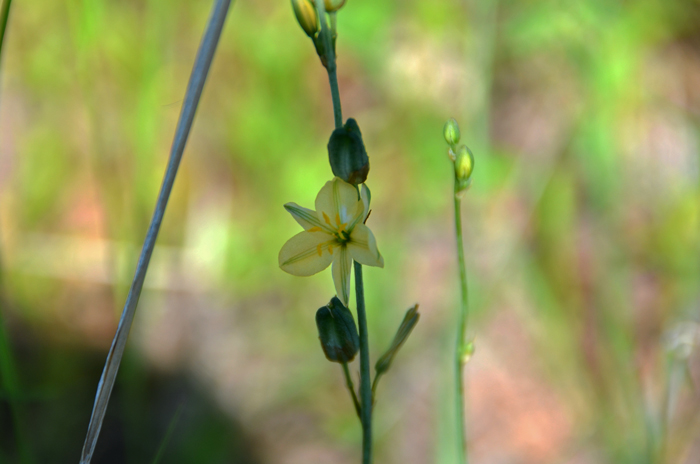Echeandia flavescens, Torrey's Craglily



Scientific Name: Echeandia flavescens
Common Name: Torrey's Craglily
Also Called: Amberlily (Spanish: Coyamol)
Family: Liliaceae or Lily Family
Synonyms: (Anthericum flavescens, Anthericum torreyi, Echeandia leptophylla, Echeandia pusilla)
Status: Native
Duration: Perennial
Size: Up to 2 feet or less.
Growth Form: Forb/herb; stems scapepose; roots enlarged from corms.
Leaves: Green; leaves narrowly linear, grasslike; leaf margins with fine teeth; leaves clustered at the bottom.
Flower Color: Orange-yellow with a green stripe down the center; tepals; flowers open in the morning, close in the afternoon; inflorescence a slender raceme; flowers facing upward or away from the stem, flower blades elliptic; fruit an oblong capsule.
Flowering Season: May to October; July to September in Texas (may begin mid-May).
Elevation: 4,500 to 9,000 feet.
Habitat Preferences: Common in juniper, oak and pine woodlands.
Recorded Range: Echeandia flavescens is relatively rare in the United States and is native to AZ, NM, TX. Largest populations of this species are found in northern and southern Arizona. Spotted populations in NM and TX. It is also native to northern Mexico.
North America & US County Distribution Map for Echeandia flavescens.
U.S. Weed Information: No information available.
Invasive/Noxious Weed Information: No information available.
Wetland Indicator: No information available.
Threatened/Endangered Information: In North America Echeandia flavescens listed as "Salvage Restricted" by the State of Arizona.
In the Southwestern United States: Arizona and New Mexico each have 1 species of genus, California, Nevada and Utah have 0 species, Texas has 3 species. All data is approximate and subject to taxonomic changes.
Comments: Echeandia flavescens, Torrey's Craglily is not a desert species and is included here for identification purposes when encountered in a transition area.
Echeandia flavescens, Torrey's Craglily has been used for a variety of purposes by western North American indigenous peoples.
See ethno-botanical uses at Native American Ethnobotany, University of Michigan, Dearborn.

